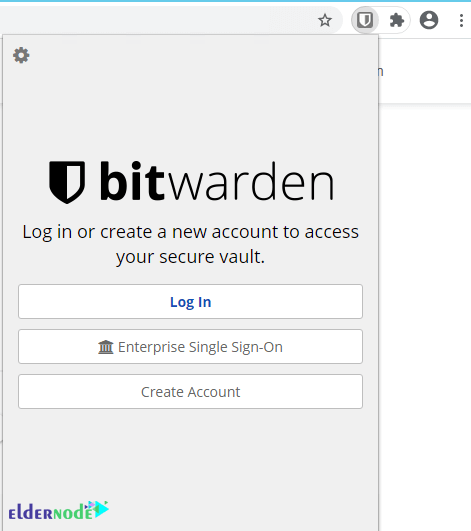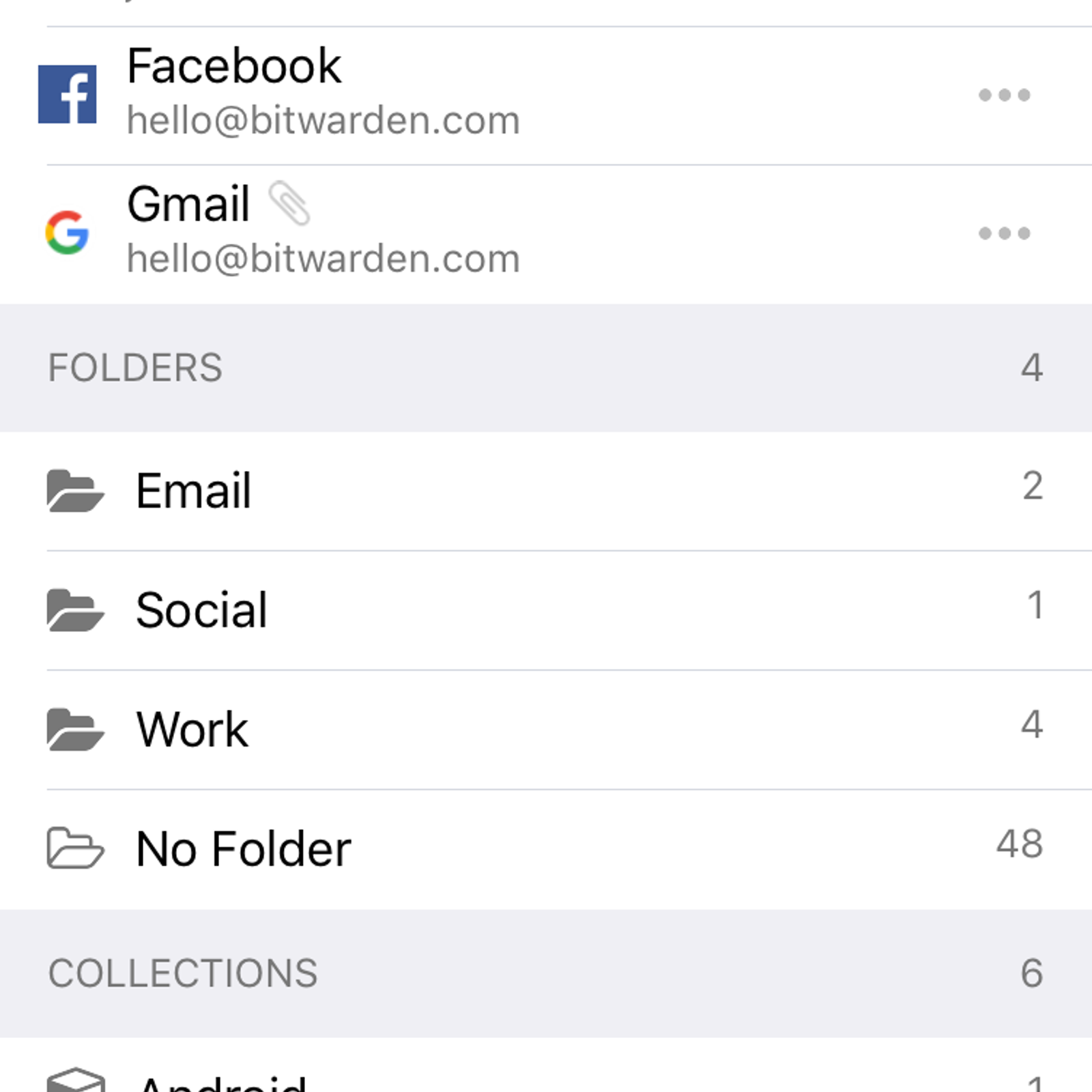Bitwarden Google Chrome
You can access your password manager from any web enabled device by using the Bitwarden web vault. Since all of your data is fully encrypted before it ever leaves your device, only you have access to it. Not even the team at Bitwarden can read your data, even if we wanted to. Your data is sealed with end-to-end AES-256 bit encryption, salted.
- Bitwarden: How to Manually Autofill a Login Form; Bitwarden: How to Copy the Username and Password of an Entry; Bitwarden: How to Open the URL Associated with an Entry; How to Increase the Size of Text on Any Website on iPad; Chrome: How to Fix Can’t Scroll Using Scrollbars; Samsung Galaxy S 21 Plus: How to Check How Much Memory Is Left.
- Bitwarden is a free and open-source password management service that stores sensitive information such as website credentials in an encrypted vault. The Bitwarden platform offers a variety of client applications including a web interface, desktop applications, browser extensions, mobile apps, and a CLI.
- Problems with the Google Chrome beta browser when trying to log on to any page bitwarder announces 'no found item com.chrome.beta' or something. Chrome version 67.0.3396.29 Bitwarden versio 1.16.0.
Bitwarden for Chrome, Firefox, Edge, Opera, and Android is a cross-platform password management solution.
Bitwarden is intended to be the easiest and safest way of storing your logins and passwords and keeping them synced between your devices. As we all know, passwords are stolen are the time from breaches. IF you reuse the same password across multiple sites, you are making yourself an easy target for hackers. It is always recommended to use unique passwords for each site you visit or have an account. Bitwarden will make the process manageable and organized.
Bitwarden is capable of storing your logins inside an encrypted vault and will sync across all of your devices. The fact that it is fully encrypted before it ever leaves your device ensures that you are the only one to have access to your data. The stored data is protected with AES-256 bit encryption, salted hashing, as well as PBKDF2 SHA-256.
Bitwarden Features:
Unlimited Vault Items
Sync passwords across all your devices
Secure password generator
Self-host option
Similar:
Password Management and the Lazy Geek
How to Secure Your Facebook Account
How to Fix the User Name or Password Is Incorrect
How to Show Hidden or Masked Passwords Behind Asterisks
How to Find Your Wi-Fi Password
How to View, Edit, and Manage Your Google Chrome Passwords
How to Change or Recover Your Password in Windows 10
Download-->
Microsoft Authenticator supports importing passwords from Google Chrome, Firefox, LastPass, Bitwarden, and Roboform. If Microsoft doesn’t currently support your existing password manager, you can manually enter sign-in credentials into our template CSV. To import your existing passwords and manage them in the Authenticator app, just export your passwords from your existing password manager into our comma-separated values (CSV) format. Then, import the exported CSV to Authenticator in our Chrome browser extension or directly into the Authenticator app (Android and iOS).
Import from Google Chrome or Android Smart Lock
You can import your passwords from Google Chrome or Android Smart Lock to Authenticator on either your smartphone or your desktop computer. You can:
Import from Chrome on Android and iOS
Google Chrome users on Android and Apple phones can import their passwords directly from their phone with few simple steps.
Install Authenticator app on your phone and open the Passwords tab.
Sign in to Google Chrome on your phone.
Tap the at the top right for Android phones or at bottom right for iOS devices, and then tap Settings.
Platform Link Android iOS In Settings, open Passwords.
Platform Link Android iOS On Android devices, tap the at the top right for Android phones, or at bottom right for iOS devices, and then tap Export passwords.
Platform Link Android iOS You must provide a PIN, fingerprint, or facial recognition. Confirm your identity and tap Export passwords again to start exporting.
After the passwords are exported, Chrome prompts you to choose which app you're importing into. Select Authenticator to start importing passwords.You’ll be informed about import status when it’s complete.
Platform Link Android iOS
Import from Chrome desktop browser
Before you begin, you must install and sign in to the Microsoft Autofill extension on your Chrome browser.
Open Google Password Manager in any browser. If you haven’t already, sign in to your Google account.
Select the gear icon to open to Password settings page.
Select Export, then on the next page select Export again to start exporting your passwords. Provide your Google password when prompted to confirm your identity. You’ll be informed about import status when it’s complete.
Open the Autofill Chrome Extension and select Settings.
Select Import data to open a dialog. Then, select Choose File to locate and import the CSV file.
Import from Firefox
Firefox allows exporting of passwords from the desktop browser only, so ensure that you have access to the Firefox desktop browser before importing passwords from Firefox.

Sign in to the latest version of Firefox on your desktop and select the menu from the top right of screen.
Select Logins and Passwords.
From the Firefox Lockwise page, select the menu, select Export Logins, and then confirm your intent by selecting Export. You are prompted to identify yourself by entering your PIN, device password or by scanning your fingerprints. Once successfully identified, Firefox exports your passwords in CSV format to the selected location.
You can import your passwords into Authenticator from a desktop browser or on iOS or Android phones. To import to the Authenticator app on your phone:
Transfer the exported CSV file on your Android or iOS phone using a preferred and safe way, and then download it. Next, share the CSV file with Authenticator app to start the import.
Platform Link Android iOS After successfully importing your password to Authenticator, delete the CSV file from your desktop or mobile phone.
Import from LastPass
LastPass supports export passwords from a desktop browser only, so ensure you have access to a desktop browser before starting to import passwords.
Sign in to the LastPass web site and select Advanced Options, and then select Export.
Identify yourself when prompted by providing your master password. After that, you’ll see the exported passwords on the webpage.
Copy the contents of the webpage.
Open Notepad (or your favorite text editor) and paste the copied content.
Save this notepad file by selecting File > Save as. Provide a name that ends with “.csv” (such as LastPass.csv) at a safe location in your desktop.
You can import your passwords into Authenticator in a desktop browser or on iOS or Android phones. To import to the Authenticator app on your phone:
Transfer the exported CSV file on your smartphone using a preferred and safe way, and then download it. Then share the CSV file with Authenticator app to start the import.
Platform Link Android iOS After successfully importing your password to Authenticator, delete the CSV file from your desktop or mobile phone.
Import from Bitwarden
Bitwarden supports export passwords from a desktop browser only, so ensure you have access to a desktop browser before starting to import passwords.
Sign in into https://vault.bitwarden.com/ and select Tools > Export vault. Choose the file format as CSV, provide your master password, and then select Export vault to start exporting.
You can import your passwords into Authenticator in a desktop browser or on iOS or Android phones. To import to the Authenticator app on your phone:
Transfer the exported CSV file on your smartphone using a preferred and safe way, and then download it. Then share the CSV file with Authenticator app to start the import.
Platform Link Android iOS After successfully importing your password to Authenticator, delete the CSV file from your desktop or mobile phone.
Import from Roboform
Roboform allows exporting of passwords from its desktop app only, so ensure you have access to the Roboform app on a desktop before starting the import.
Start RoboForm from your desktop client and log in to your account.
Select Options from the Roboform menu.
Select Account & Data > Export.
Choose a safe location to save your exported file. Select Logins as the Data type and select the CSV file as the format, and then select Export.
Confirm your intent and the CSV file is then exported to the selected location.
You can import your passwords into Authenticator in a desktop browser or on iOS or Android phones. To import to the Authenticator app on your phone:
Transfer the exported CSV file on your smartphone using a preferred and safe way, and then download it. Then share the CSV file with Authenticator app to start the import.
Platform Link Android iOS After successfully importing your password to Authenticator, delete the CSV file from your desktop or mobile phone.

Bitwarden Download
Import by creating a CSV
Bitwarden For Google Chrome
If steps to import passwords from your password manager aren't listed in this article, you can create a CSV that you can use to import your passwords into Authenticator. Microsoft recommends that you follow these steps on a desktop for ease of formatting.
Bitwarden Addon Google Chrome
On your desktop, download and open our import template. If you are an Apple iPhone, Safari, and Keychain user, you can now skip to step 4.
Export your passwords from your existing password manager in a nonencrypted CSV file.
Copy the relevant columns from your exported CSV to the template CSV and then save.
If you don’t have an exported CSV, you can copy each login from your existing password manager to the template CSV. Don’t remove or change the header row. When you finish, verify the integrity of your data before you begin the next step.
You can import your passwords into Authenticator in a desktop browser or on iOS or Android phones. To import to the Authenticator app on your phone:
Transfer the exported CSV file on your smartphone using a preferred and safe way, and then download it. Then share the CSV file with Authenticator app to start the import.
Platform Link Android iOS After successfully importing your password to Authenticator, delete the CSV file from your desktop or mobile phone.
Bitwarden Google Chrome
Troubleshooting steps

Bitwarden Google Chrome Download
The most common cause of failed imports is incorrect formatting in the CSV file. You can try the following steps to troubleshoot the issue.
Bitwarden Extension Vivaldi
Check this article to see if if we already support importing passwords from your current password manager. If we do, you may want to retry the import by following the steps mentioned for your respective provider.
If we don’t currently support importing the format of your password manager, you could retry by creating your CSV file manually.
You can verify the integrity of CSV data with following suggestions:
First row must contain a header with three columns: url, username, and password.
Each row must contain a value under url and passwords columns.
You can recreate the CSV by pasting your content in the CSV template file.
If nothing else works, please report your issue using the Send Feedback link from Authenticator app settings.
